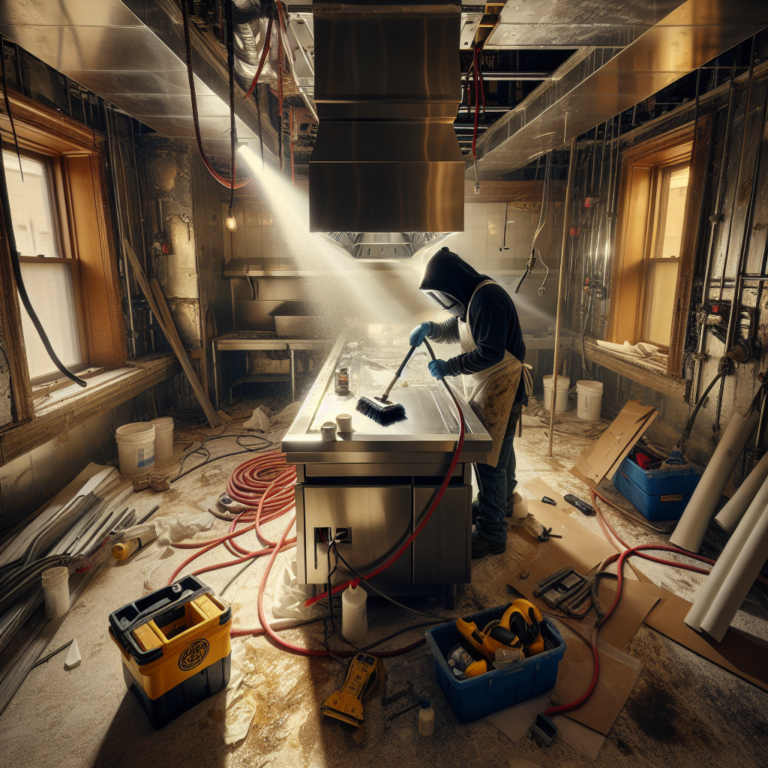Essential Training Tips for Effective Hood Cleaning Procedures
Why Employee Training is Crucial in Hood Cleaning
Restaurants are bustling hubs of culinary delight, but behind every delicious dish lies a critical yet often overlooked aspect: hood cleaning. Proper restaurant hood cleaning is essential for maintaining a safe and efficient kitchen. Employee training is key to ensuring these procedures are executed correctly, minimizing risks and maximizing performance. This post explores why training your team on essential hood cleaning knowledge is non-negotiable and provides some practical tips to get started.
The Importance of Hood Cleaning
The kitchen hood, or exhaust hood, acts as a crucial ventilation system that expels smoke, steam, and airborne grease. Over time, these components can accumulate grease and grime, becoming a significant fire hazard. Regular commercial kitchen hood cleaning not only ensures a safe cooking environment but also maintains air quality and improves the kitchen’s efficiency. Due to the complexity and importance of this task, it becomes imperative that all team members are well-versed in proper cleaning protocols.
Compliance with Health and Safety Regulations
Regulatory bodies, such as OSHA and NFPA, have strict guidelines for maintaining commercial kitchens. Failure to adhere to these regulations can result in hefty fines or, worse, endanger the lives of your staff and customers. Thorough training ensures that your team is compliant with these regulations, reducing the risk of citations and enhancing the overall safety of your establishment.
Training Your Team: Key Focus Areas
A comprehensive training program should cover various aspects of hood cleaning. Here are some critical areas to focus on:
Understanding the Basics
- Hood Components: Educate your team about the parts of a hood system, including filters, ducts, and exhaust fans. Understanding the anatomy helps them identify areas that need attention.
- Types of Contaminants: Make sure your team knows about the common types of buildup, such as grease, soot, and food residues, and how each one affects the performance of the hood.
Standard Operating Procedures (SOPs)
Standard Operating Procedures create a consistent approach to exhaust hood cleaning. Train your team on the following SOPs:
- Preparation: Emphasize the importance of preparing the area, including covering surfaces and disconnecting power supplies to prevent accidents.
- Tools and Cleaning Agents: Educate your team on the appropriate tools and cleaning agents. Using the wrong agents can damage the system or be ineffective in removing grease.
- Step-by-Step Cleaning: Create a detailed procedure manual. For instance, a guideline could include removing filters, soaking them in degreaser, scrubbing ducts, and inspecting for missed spots.
Safety Measures
Safety should be a top priority in any training program. Focus on these areas:
- Personal Protective Equipment (PPE): Ensure your team uses gloves, goggles, and masks to protect against chemical splashes and airborne contaminants.
- Fire Safety: Highlight the fire risks associated with hood cleaning and teach your team how to manage grease fires using fire extinguishers.
- Proper Disposal: Train employees on disposing of waste materials safely to prevent environmental contamination and adhere to local waste disposal regulations.
Implementing a Training Program
Implementing a successful training program requires planning and ongoing effort. Follow these steps to ensure your team is well-prepared:
Create a Training Manual
A comprehensive manual serves as a go-to reference, detailing every aspect of commercial kitchen hood cleaning. The manual should be easily accessible to all employees, whether in print or digital form.
Conduct Hands-On Training
Reading about procedures is one thing, but practical, hands-on training is vital for skill development. Organize regular training sessions where employees can practice under supervision, providing them the opportunity to ask questions and clarify doubts.
Regular Refresher Courses
Consistency in training ensures that knowledge is retained and updated. Schedule periodic refresher courses to keep everyone on the same page, especially when new regulations or techniques come into play.
Monitor and Evaluate
Assess the effectiveness of your training program by regularly monitoring your team’s performance. Create checklists and conduct spot checks to ensure compliance. Feedback mechanisms like surveys can also help identify areas for improvement.
Reward Excellence
Incentivize your employees to excel in their cleaning tasks. Rewards could range from verbal recognition to more formal awards, fostering a culture of excellence and compliance.
Conclusion
Training your team in essential hood cleaning procedures is an invaluable investment. It enhances safety, ensures regulatory compliance, and boosts the overall efficiency of your commercial kitchen. Make it a priority, and you’ll not only meet industry standards but also create a healthier, safer working environment for everyone involved. For top-notch restaurant hood cleaning services, trust the professionals at Best Hood Cleaning Sacramento.







